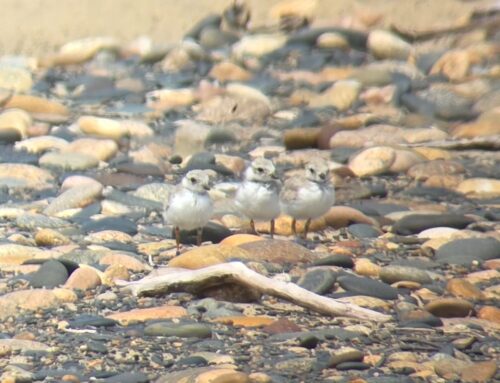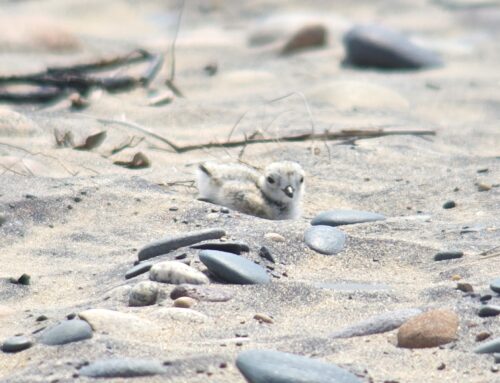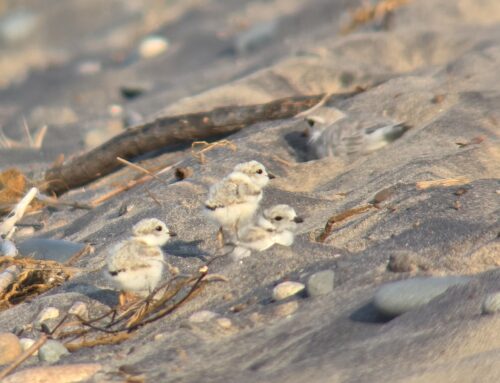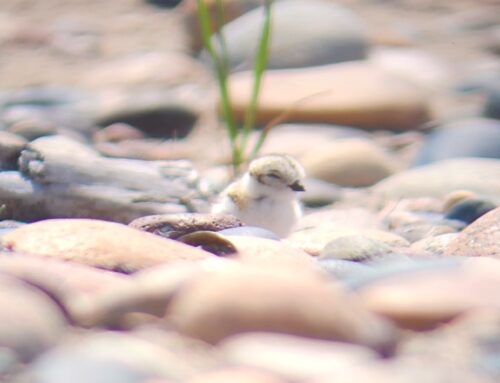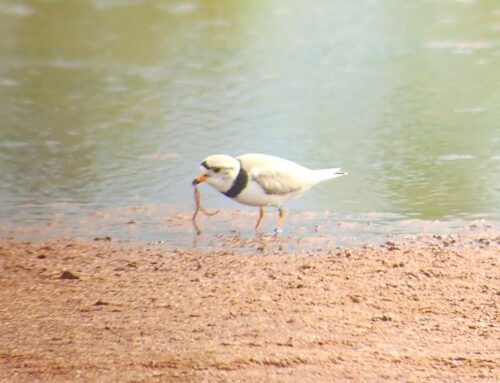Greetings! This is the Whitefish Point sightings summary for May 13-21st. It’s safe to say that the weather has not been our friend this month. Primarily north winds have continued until the 18th, and last weekend had some snow every day! Migration for most species has been slow, certainly slower that what should be expected for this time of year, but such is the game of spring in the North Country. When the weather finally broke on the 18th, we recorded a good incursion of migrants to the area and many new species for the season were recorded.
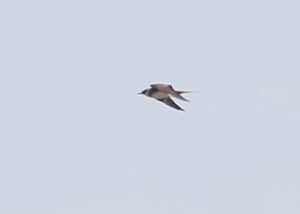
Parasitic Jaeger by Ted Keyel
White-winged Scoters finally got on the move this week with flights in the hundreds recorded on a few days. This handsome bird is one of the best features of the spring count and evening flights before dusk can be an excellent time to see these birds. In the two day time period of May 19-20th, just over 1,000 White-winged Scoters were recorded! In with the White-wings have been a handful of Surf Scoters and a few more Black Scoters. Long-tailed Ducks had a good flight day with a few hundred on the 19th. The 19th also saw a good push of Red-breasted Mergansers. Common Loons continue to trickle through, and Red-throated Loons had a good day with 64 on the 19th. One of the season’s highlights was a stunning breeding plumaged PACIFIC LOON on the 15th. Red-necked Grebes have really slowed down and are probably wrapping up there season as well. Even though most species of waterbirds are winding down, the shorebirds are just starting to get good! There is now a paired duo of Piping Plovers on the beach and migrant Semipalmated and Black-bellied Plovers have been observed. Whimbrel have been seen on the waterbird count early in the morning a few times this week and an evening watch on the 21st produced a count of 94 Whimbrel in three flocks. An excellent spot from the hawk deck was an adult PARASITIC JAEGER over the Lighthouse on the 21st. Bonaparte’s Gulls have been still migrating through, though their numbers are starting to decrease. Exciting was a 1st summer FRANKLIN’S GULL on the waterbird count on the 21st. Common Tern flocks are increasing, and a flock of 4 Forster’s Tern’s were seen on the evening of the 21st.
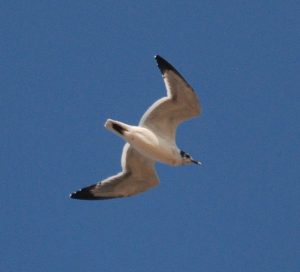
Franklin’s Gull by Skye Haas
The Hawk Count recorded its largest flock of Broad-winged Hawks with 440 on May 19th. We certainly at this date are not going to get another big push of adult Broad-wings, but younger birds can certainly move in big numbers and a few more good days on the deck should happen. There has been a steady push of young Bald Eagles as is typical this time of year. The Sharp-shinned Hawks are certainly slowing down, but the Peregrine flight continues to be decent with over 25 birds this last week. The current total for the season is just over 18,000 raptors! Owls are slowing down quite a bit as expected, but the owl banders have been reporting nightjars returning. Whip-poor-wills have been regularly singing at dusk, and making for only a 2nd Whitefish Point record was a calling CHUCK-WILL’S-WIDOW on the evening of the 16th. Efforts to refind or even hear again this bird was sadly unsuccessful. Common Nighthawk returned as of the 20th.
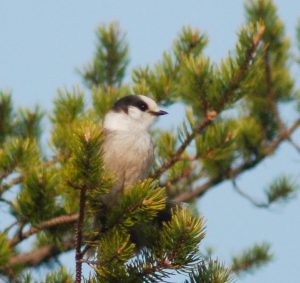
Gray Jay by Skye Haas
Passerine migration is finally kicking! Flycatchers take their time getting to the north after the phoebe vanguard, but Eastern Kingbirds and Least Flycatchers are starting to slip back through. Vireo numbers are also dragging with just a small handful of Blue-headed Vireos and 1 each of Red-eyed and Philadelphia Vireos. Anyone who has been to Whitefish Point in mid-May certainly has seen the huge Blue Jay flocks that can amass over the point. Numbers likely peaked this week with 1350 on the 17th. Rare to Whitefish Point and always a joy to see was a Gray Jay working the jack pines on the 21st. Black-capped Chickadee numbers are low this year and very few flocks are working the point. Still no Boreal Chickadees have been seen. Thrushes too are low, with only 1 Swainson’s Thrush recorded for the season so far. Indicative of just how late this spring is, the peak date of Eastern Bluebirds was just had on the 21st with 73 counted. The first Gray Catbird showed up on the 21st, with a Northern Mockingbird being found later that same day. A huge flight of American Pipits were recorded on the 17th with over 2000 counted that day! Warblers have treated us to a few solid days and we are currently up to 20 species for the season.
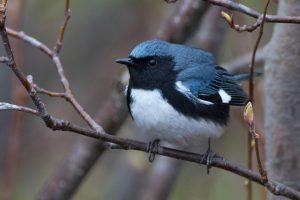
Black-throated Blue Warbler by Zak Pohlen
As of the 21st, we have recorded Ovenbird, Northern Waterthrush, Black-and-white, Tennessee, Orange-crowned, Nashville, Common Yellowthroat, American Redstart, Cape May, Northern Parula, Magnolia, Blackburian, Yellow, Chestnut-sided, Black-throated Blue, Palm, Pine, Yellow-rumped, Black-throated Green and Wilson’s Warblers. White-crowned Sparrows had some robust days as well, with days with hundred plus birds at the feeders. However the warm-up of this weekend has sent them further north to the taiga, and just handfuls remain. Clay-colored Sparrows have been sparse this year but 1-2 birds have been steadily seen at the hawk deck this last week. Rose-breasted Grosbeaks have been in modest numbers around the point this week. The first Indigo Bunting was seen on the 19th, and a few Scarlet Tanagers and Baltimore Orioles have been around.
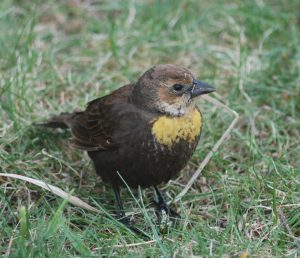
Yellow-headed Blackbird by Skye Haas
A female Yellow-headed Blackbird spend the day at the WPBO feeders on the 21st. A Rusty Blackbird on the hawk watch on the 20th was getting to be a latish sighting. Pine Siskins are finally getting in on the finch action, with the last few days having a good push of this species through. They sometimes delay their flight north until late May/early June and this seems to be the case this year. Evening Grosbeaks continue to be seen daily in small numbers at the WPBO feeders.
Ten more days of counting to go!
Skye Haas

